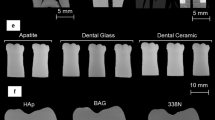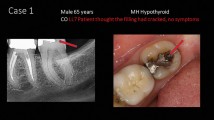Abstract
Aim This pilot study evaluated a novel method of teaching dental caries removal to overcome the drawbacks in using plastic teeth that neither simulate carious lesions nor emulate the hard tissues of the tooth.
Methods This study evaluated the students' perception of a novel method of pre-clinical teaching of caries removal on 3D-printed teeth with a simulated carious lesion. The lesion was simulated by creating an area of low density within the printed tooth. The study also examined the variation in location and extent of cavity preparation by the participants using a heat map analysis. Students who were in their final year of graduation, in the same university of the researchers, prepared cavities on the 3D-printed teeth and answered a questionnaire on their perceived readiness for clinical practice with conventional teaching versus the 3D-printed teeth.
Results Among the 14 participants, a majority stated that they had high levels of anxiety when treating their first carious lesion and that the 3D-printed teeth would have better prepared them to treat patients. More than half indicated that the 3D-printed teeth had a better haptic simulation of caries removal and would have reduced their stress/anxiety when treating their first caries patient. There was a wide variation in the perimeter and the surface area of the cavity preparations by the participants.
Conclusion Teaching caries removal with 3D-printed teeth that emulate a carious lesion could help students gain confidence and make them feel better prepared to treat patients in clinics.
This is a preview of subscription content, access via your institution
Access options
Subscribe to this journal
Receive 4 print issues and online access
$259.00 per year
only $64.75 per issue
Buy this article
- Purchase on Springer Link
- Instant access to full article PDF
Prices may be subject to local taxes which are calculated during checkout
Similar content being viewed by others
Change history
25 March 2022
A Correction to this paper has been published: https://doi.org/10.1038/s41432-022-0234-2
References
Critical Appraisal Skills Programme. CASP Qualitative Checklist. 2018. Available at https://casp-uk.net/wp-content/uploads/2018/03/CASP-Qualitative-Checklist-2018_fillable_form.pdf (accessed September 2021).
Ogrinc G, Armstrong G E, Dolansky M A, Singh M K, Davies L. SQUIRE-EDU (Standards for QUality Improvement Reporting Excellence in Education): Publication Guidelines for Educational Improvement. Acad Med 2019; 94: 1461-1470.
Höhne C, Schmitter M. 3D Printed Teeth for the Preclinical Education of Dental Students. J Dent Educ 2019; 83: 1100-1106.
Reymus M, Liebermann A, Diegritz C, Keβler A. Development and evaluation of an interdisciplinary teaching model via 3D printing. Clin Exp Dent Res 2021; 7: 3-10.
Author information
Authors and Affiliations
Rights and permissions
About this article
Cite this article
Chaudhari, P., Dhillon, H., Dhingra, K. et al. 3D printing for fostering better dental education. Evid Based Dent 22, 154–155 (2021). https://doi.org/10.1038/s41432-021-0217-8
Received:
Accepted:
Published:
Issue Date:
DOI: https://doi.org/10.1038/s41432-021-0217-8



